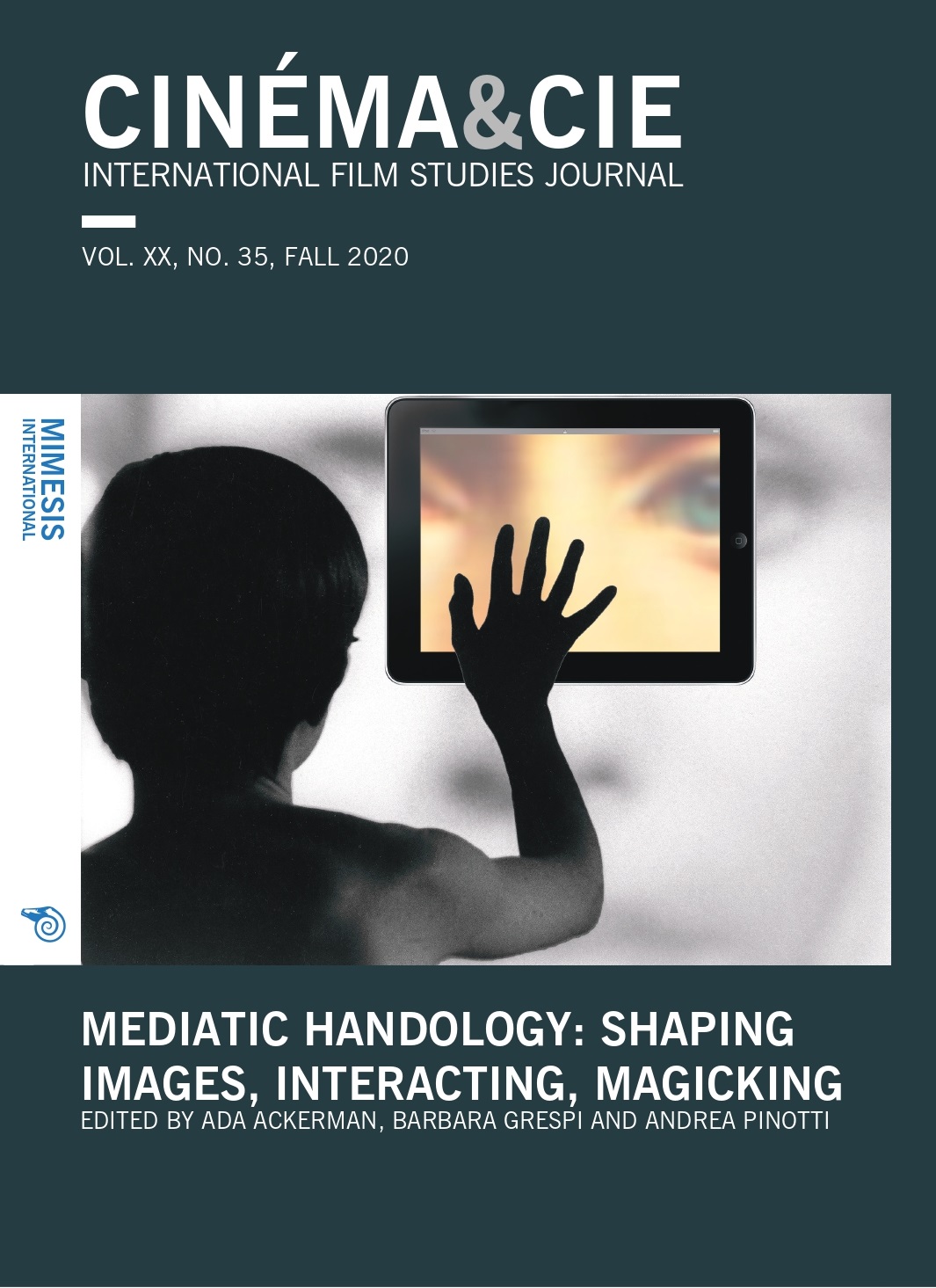'Rêve d’un geste' ou la main et l’œil dans quelques films du handicap sensoriel
Abstract
This contribution examines how and why a cluster of films from every period or genre in the history of cinema and exhibiting blind or deaf characters, or both — such as The Wheel (Abel Gance, 1923), The Miracle Worker (Arthur Penn, 1962), Land of Silence and Darkness (Werner Herzog, 1971), Earth of the Blind (Audrius Stonys, 1992), The Silence (Mohsen Makhmalbaf, 1998) and Mademoiselle Paradis (Barbara Albert, 2017) — demonstrates a consistent paradigm linking the sensory deprived, the dream work or ‘film work’ (Thierry Kuntzel) and a high frequency of hands and eyes. This configuration entails a specific form of spectatorship and can be analysed both as a set of oniric and transmodal punctuation marks of sorts and an ethical and even political emphasis on gesture. Film analysis thus allows to decipher and exemplify the mediality of cinema when it is, as Giorgio Agamben suggests according to ‘the beautiful definition implicit in Beckett’s Traum und Nacht, […] the dream of a gesture.’






